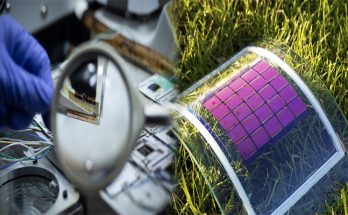Perovskite solar cells have emerged as a promising alternative to traditional silicon-based solar cells due to their exceptional optical and electrical properties. As research in this field continues to advance, new trends and developments are shaping the future of perovskite solar cells. In this article, we will explore some of the emerging trends in perovskite solar cell research that hold great potential for improving efficiency, stability, and commercial viability.
1. Tandem and Multi-Junction Designs
One of the prominent trends in perovskite solar cell research is the exploration of tandem and multi-junction designs. Tandem cells involve stacking multiple layers of perovskite solar cells with different bandgaps, allowing for a broader spectrum of light absorption and improved overall efficiency. Similarly, multi-junction designs combine perovskite solar cells with other solar cell technologies, such as silicon or thin-film materials, to achieve higher efficiencies. These designs aim to maximize power conversion efficiency by harnessing the complementary characteristics of different materials.
2. Stability and Durability Enhancements
Perovskite solar cell stability and durability have been significant challenges in their adoption for commercial applications. Researchers are actively working towards improving the stability of perovskite materials to increase their lifespan and resistance to environmental stressors. This includes developing new encapsulation techniques, exploring alternative materials for improved stability, and understanding the degradation mechanisms to devise mitigation strategies. Enhancing the stability and durability of perovskite solar cells is vital for their competitiveness in the renewable energy market.
3. Scalability and Manufacturing Techniques
To achieve commercial viability, perovskite solar cell production must be scalable and cost-effective. Researchers are investigating new manufacturing techniques that can facilitate large-scale production while maintaining high-quality perovskite films. Solution-based deposition methods, such as inkjet printing and spray coating, are being explored to enable low-cost and high-throughput fabrication processes. Additionally, roll-to-roll manufacturing techniques are being investigated to achieve continuous and cost-effective production of perovskite solar cells.
4. Perovskite Tandem Solar Modules
Building upon the tandem cell concept, research is focusing on the development of perovskite tandem solar modules. These modules involve integrating perovskite solar cells with other established solar cell technologies to create efficient and flexible solar modules. Perovskite tandems with silicon, CIGS, or tandem perovskite-perovskite combinations offer promising approaches for achieving high efficiencies beyond the limitations of single-junction perovskite solar cells. The development of perovskite tandem solar modules holds potential for scalable and highly efficient solar energy generation.
5. Interface Engineering for Improved Performance
The interfaces within a perovskite solar cell, such as the electron and hole transport layers and contacts, play a critical role in device performance. Researchers are exploring interface engineering techniques to enhance charge extraction, reduce losses, and improve charge carrier lifetime. This involves optimizing interface materials and introducing new interfacial layers to minimize recombination and enhance charge transport. Improving interface engineering can lead to significant advancements in perovskite solar cell efficiency and stability.
6. Environmental and Health Considerations
As perovskite solar cells move towards larger-scale production, the environmental and health impacts must be considered. Researchers are investigating the use of lead-free and less toxic perovskite materials to address concerns related to the toxicity of lead-based perovskites. Additionally, recyclability and sustainable manufacturing processes are being explored to minimize the environmental footprint of perovskite solar cell production. Ensuring the environmental and health sustainability of perovskite solar cells is crucial for their widespread adoption and long-term viability.
Research in perovskite solar cells is advancing rapidly, with emerging trends focused on improving efficiency, stability, scalability, and sustainability. Tandem and multi-junction designs, stability enhancements, scalable manufacturing techniques, perovskite tandems, interface engineering, and environmental considerations are key areas of research. As these trends continue to evolve, perovskite solar cells have the potential to become a cost-effective, efficient, and sustainable solution for renewable energy generation, contributing to a greener future.





